Wonderful Whitby
Goathland
Goathland is an attractive village, 500 feet above sea level. It is 8 miles southwest of Whitby, and has a history dating back to the Vikings. Sheep freely wander along the village, keeping the greens carefully manicured, and pausing to beg titbits from visitors (don’t feed them, they become a nuisance). The sheep have a common right, granted by the Duchy of Lancaster, to graze the village greens and the surrounding moorland. In the 1100’s, a small group of Christian brothers settled by the Eller Beck, they built a chapel, St. Mary at Godeland (Gods land).
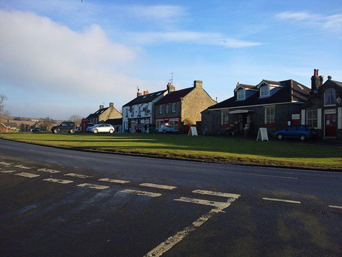
Goathland Village
Nothing remains of this chapel, except the altar stone, which is in the present church - St. Mary’s Church of England. There is mention of a chapel in 1568, and yet again another church in 1821. The present church dates from 1896, and houses many interesting artefacts from previous times, including a seventeenth century pulpit. Much of the woodwork, is by Robert ‘Mouseman’ Thompson of Kilburn, the stained glass windows depict local Saints Hilda, Cuthbert and Aiden.
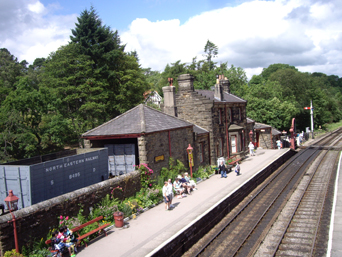
Goathland Station
The station at Goathland is served by the North Yorks Moors Railway and is a glimpse of days gone by. Indeed, it was the setting of Hogsmeade Station in the Harry Potter movie, and many local schoolchildren were invited to be ‘extras’. The station itself was closed in 1965. But, in 1968 the North York Moors Historical Railway Trust Ltd., helped by many volunteers, formed a group to operate the railway between Grosmont and Pickering and the first passenger service commenced in 1973.
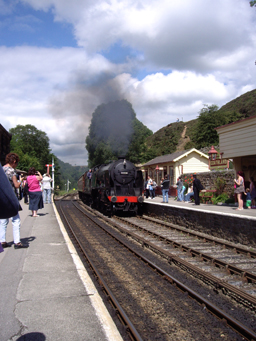
Steam Train at Goathland Station
So popular has this railway become, that annual events take place including santa specials and wartime weekends. The magnificent steam trains of the North Yorkshire Moors Railway often stop at Goathland Station.The Steam trains run from Pickering to
Grosmont at various times throught out the year, and from 27th March to 31st October, steam trains run at certain times from Pickering to Whitby.
Please check the North Yorkshire Moors Railway website for details of special events and timetables, by clicking on the following link.
North Yorkshire Moors Railway
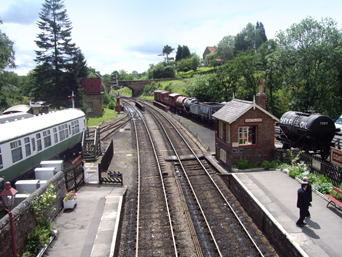
Goathland Station
Goathland village is home to the sword-dance team, ‘The Plough Stots’, which is the oldest long-sword dance group in the country. Each January there is the ancient ritual, 'Blessing of the Plough', for greeting the new year, which originated with the Norsemen who settled here more than a thousand years ago. This dance group perform at the local folk festivals and Moor and Coast festivals.
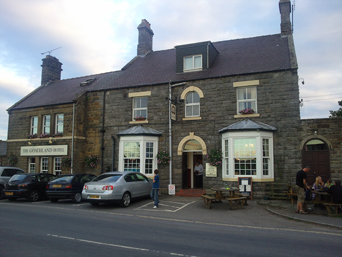
Goathland hotel (Aidensfield Arms in Heartbeat)
Village life in Goathland, changed dramatically in 1991, when a film crew arrived to film ‘Heartbeat’, a television series set in the 1960’s, depicting a fictitious local police station in the village of Aidensfield (Goathland). This popular television series continued to film in and around the area until 2010 when the series was axed.
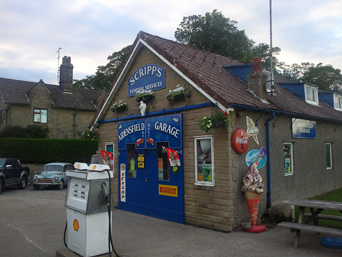
Scripps Garage and Funeral Directors
The Goathland Hotel became the Aidensfield Arms (Aiden - after a local saint), the local garage became Scripps Garage and Funeral Directors and the village store became Aidensfield stores. Visitors to the village would often find filming taking place in and around the area, the double yellow road lines often being covered up for authenticity. The village store and post office are immediately recognisable, as is the war memorial erected on the village green in 1922, which is a replica of Lilla Cross.
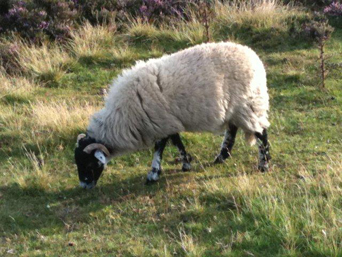
Grazing Sheep
Goathland Exhibition Centre, is excellent for finding out about the local area and traditions, and a valuable source of information regarding walks in the area.
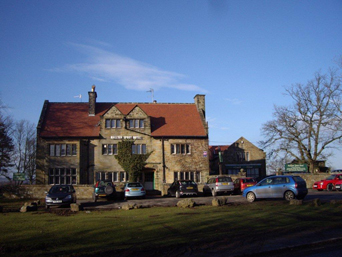
Mallyan Spout Hotel, Goathland
The Mallyan Spout is a 60 - 70 feet high waterfall, most spectacular after heavy rainfall. The walk to the waterfall is accessed by a riverside walk, starting near the Mallyan Spout Hotel. Part of it is wooded and the walk will take you up to the Spout itself and, in fact, underneath it! Walker Mill Foss and Nelly Ayre Foss are two more pretty waterfalls in the area.
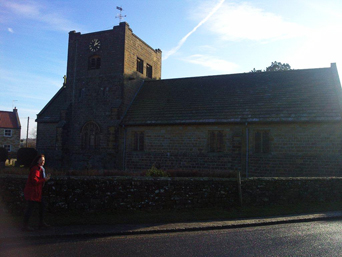
Goathland Church
Wades Causeway is a local name for a stretch of the old Roman Road that crosses Wheeldale Moor, not far from Goathland, and is probably the best preserved stretch of roman road in Britain.
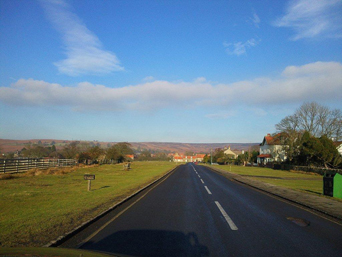
Goathland Village
A walk known as the Historic Rail Trail follows the original railway line in the village. This included the dangerous incline at Beckhole. The original Goathland Railway Station, at the top of the Beckhole Incline (see Beckhole page for details), was closed when the safer deviation line opened. The original station had a life of less than 30 years. The Historic Rail Trail stretches from Goathland to Grosmont, it runs along the route of George Stephenson's original railway line of 1836 and passes through Beckhole and Buber Wood.
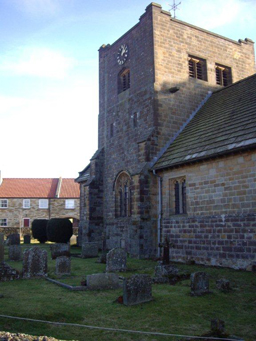
Goathland has large car park, alongside the public conveniences, where both coaches and cars can park to enable the visitor to enjoy the sights and walks around the village. Goathland has a range of holiday accommodation, including hotels, bed and breakfast's and self catering holiday cottages

Road to Goathland
Darnholm has a wooden bridge and stepping stones and is well worth a visit, as it is so picturesque, and can be incorporated in the ‘Water Arc’ walk.
